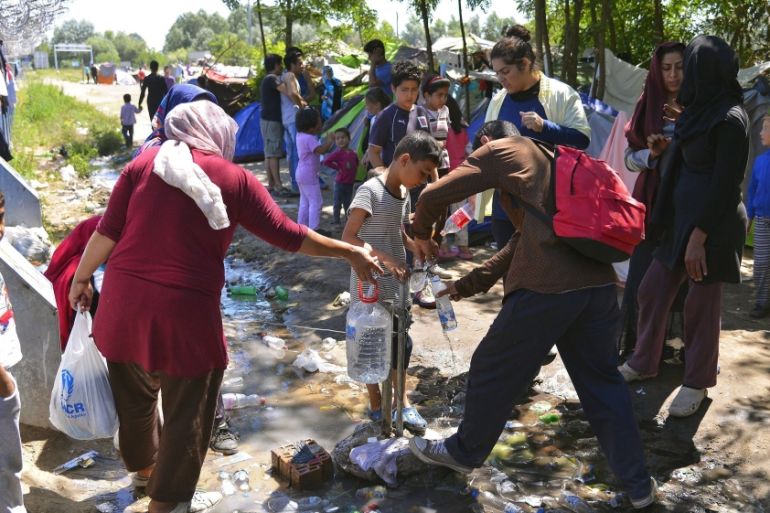Hundreds of refugees march to Serbia-Hungary border
Refugees and migrants mass on the Serbia-Hungary border due to tight border controls introduced in early July.

Hundreds of refugees and migrants have set off marching from the Serbian capital to the Hungarian border in protest against closed borders and European Union restrictions on entry.
|
|
A group of several dozen refugees and migrants first arrived on Sunday in northern Serbia’s Subotica, a town situated around 10km from the Hungarian border, after taking a train part of the way from Belgrade.
Keep reading
list of 4 itemsHow Gaza’s children are preparing for Israel’s invasion of Rafah I Close Up
UK police arrest three over deaths of five people in English Channel
UK passes bill to deport asylum seekers to Rwanda: What’s next?
More than 300 people started the march on Friday with the hopes of making the 200km trek to the border.
Hungary introduced harsh border control measures on July 5, leaving hundreds of refugees and migrants stranded on the Serbian border.
Under those measures, Hungarian forces can expel to Serbian territory any refugee or migrant caught within 8km on the Hungarian side of the border without any deportation process.
Back in September 2015, Hungary built a razor-wire fence along the 175km border with Serbia and criminalised breaching or damaging the fence to enter the country.
With more people arriving in the refugee camps on the Serbian side of the border, Hungarian journalist Balint Bardi said the “situation is getting worse and growing”.
READ MORE: Hungary’s border war on refugees
Hungarian authorities allow 15 people a day – 14 from families and one single male – to enter a pair of transit zones between the two countries and apply for asylum.
“They will have to wait for several months. It’s impossible. All the refugees feel desperate, especially single males,” Bardi, who has reported from both sides of the Hungarian-Serbian border, told Al Jazeera by telephone.
On the Serbian side of the border, Bardi estimates that up to 1,000 people are waiting in two impromptu camps and one official camp. “There’s not enough drinking water, no electricity to charge their phones,” he said.

Afyer the introduction of the new border restrictions, Gyorgy Bakondi, chief adviser on homeland security to Hungarian Prime Minister Viktor Orban, said they were introduced “to prevent illegal immigrants from being in Hungary, but [also] to allow those who wish to submit requests for asylum”.
‘Breaking all the rules’
Earlier this month, Human Rights Watch released a report criticising Hungary’s treatment of refugees and migrants detained after entering or while attempting to enter its territory.
The report was dismissed by the Hungarian government.
Based on interviews with 41 refugees and several institutions, the report claims that a group of 30 to 40 refugees and migrants – among them women and children – were beaten by soldiers for two hours after being held in Hungary.
The report quoted an unidentified man as saying: “I haven’t even seen such beating in the movies.”
“Five or six soldiers took us one by one to beat us. They tied our hands with plastic handcuffs on our backs. They beat us with everything, with fists, kicks and batons. They deliberately gave us bad injuries.”
READ MORE: Hungary sentences refugees for breaching border fence
Others interviewed by the rights group said they were beaten by police and then forced back into Serbia through small openings in the razor-wire fence.
Lydia Gall, HRW’s regional researcher, said that “the abuse of asylum seekers and migrants runs counter to Hungary’s obligations under European Union law, refugee law and human rights law”.
“The European Commission should use its enforcement powers to press Budapest to comply with its obligation under EU law, to provide meaningful access to asylum and fair procedures for those at its borders and on its territory.”
“Hungary is breaking all the rules for asylum-seekers,” Gall said.
|
|